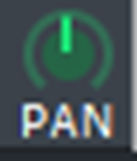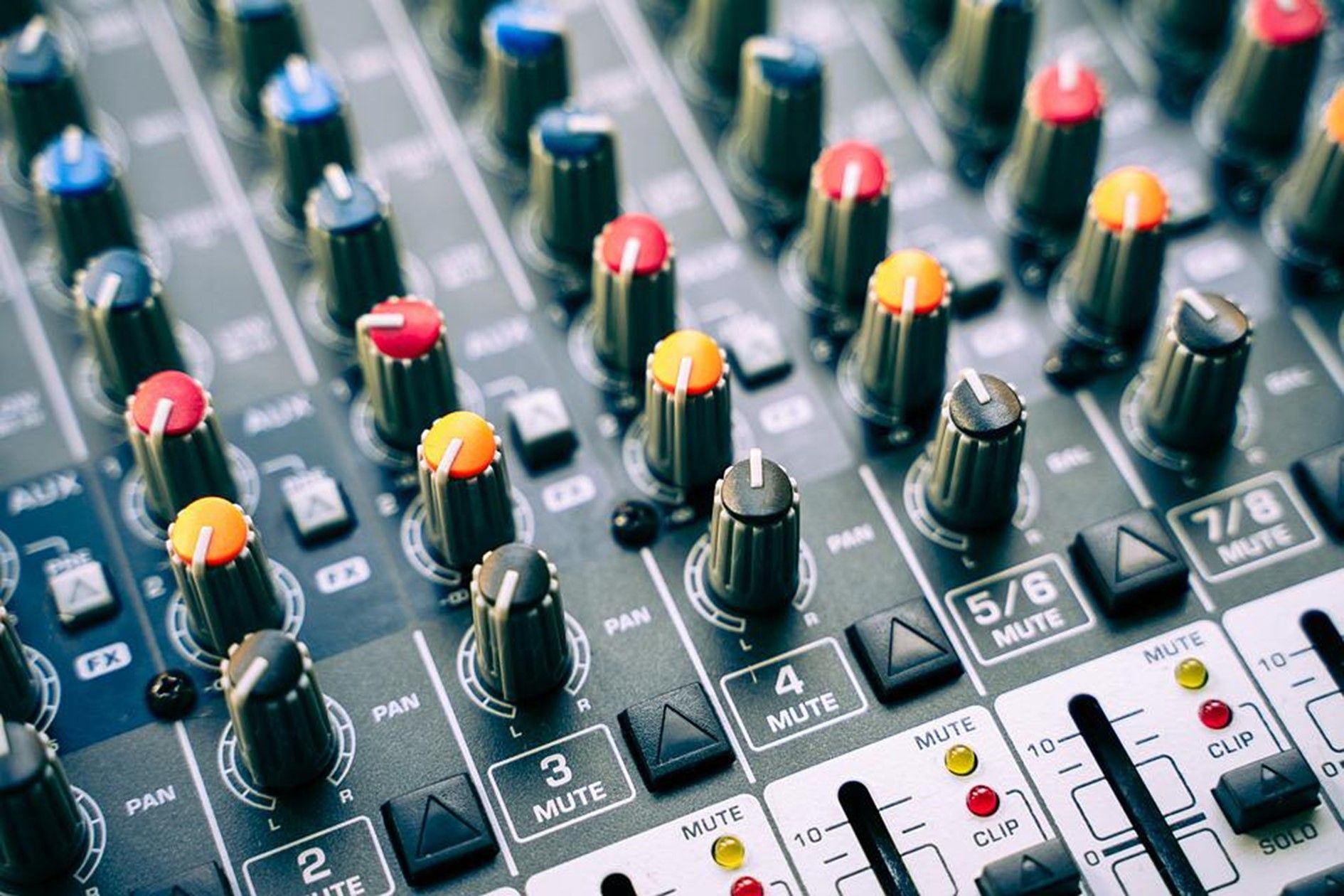
by Jnmarseille13 (May 26, 2022)
by Jnmarseille13 (May 26, 2022)
Have you ever listened to a song from the 70s with stereo speakers or headphones and notice how some instruments on the all the way to the left and others all the way to the right? Although this might have been due to mixing boards having a bit less feature back then, I personally love this… feels like you’re listening to the band playing live.

As time went on, mixing gears and techniques evolved, and many engineers and producer began to make stereo panning less apparent. However, it’s still there, just not as visible as in the 70s. In fact, playing with stereo is very important, as it will make different instruments in a song blend well together without the feeling that they are “walking” on each other’s.
Stereo panning is a feature that should be used, but you will see the benefit of this by also using it with other mixing tools, such as an equalizer.
So, a stereo panning knob is very simple to use. Its mark is placed at the bottom, and the more you turn it to one side, the more you will hear the sound you’re controlling on this one side. So, for example, if you turn it all the way to the left, you’ll hear it completely on the left speaker only.

When I was starting to make music, I usually rarely ever put my hands on those knobs, and I’m sure that’s the case for many beginners. But once I started to do more research on mixing techniques, I started to understand how this one tool can change a whole song.
When you just leave everything in the middle, the sounds will feel stacked on top of each other’s, sometimes leading to unwanted sound saturation. So, to avoid this, after you finished composing an instrumental, you can decide how you will have your instruments “share the room”. For instance, you can leave the instruments that should stand out the most somehow in the middle and have the accompanying instruments closer to the edges of whichever side you choose.
However, always make sure to have balance between both sides. That way you won’t have one side that’s completely and another side that’s filled (it would sound very unpleasant to the listener).

For those of you who record vocals, sometimes you or your singer might want to create some sort of choir effect (several voices singing all at the same time).
Sure, you could just download a plugin that will require you to record just once and automatically duplicate the vocals and change their pitches. Or you could do this work on your own, which will require you to re-record each part of the choir but will also give a more natural feel.
If you choose that second option, then you will see how stereo panning helps. Let’s say you want a choir composed of 4 voices. The process is simple. You record the vocals 4 times at a different pitch each time. Then you put the two deepest of them almost all the way to the sides (one on the left side, and the other on the right side). Then you put the other two somewhere between 40% and 50% on the sides as well. Then see how it sounds like with headphones or a pair of stereo speakers and adjust it to your needs.
Of course, this is one way of creating a natural choir effect, but far from being the only one.

A lot of people seem to enjoy 8D music videos on YouTube. Some people also love hearing this effect in a song. Usually, this is done through a combination of more than one effect, and that includes stereo panning.
Most DAWs nowadays offer the possibility to automate effects that you apply on instruments, so that you can have some parameters evolve on their own, following a pattern that you defined, during a song. In our case (8D music effect), what you can do is automate the stereo panning effect and have it going through a repeating cycle (left to right, then right to left, then left to right…) throughout the whole track.
As you can see, a stereo panning knob can be very powerful and make a lot of changes in a song. Many of us probably didn’t see why this was important, back when we were just starting out in music, until we started using it.
Although stereo panning is a great and essential tool in our mixing journey, it should be combined with other important mixing tools such as EQ. The reason why I’m mention EQ specifically is because one should not go without the other. The combination of those 2 tools, if used well, can make a huge number of instruments and elements merge without the feeling that everything is stacked and painful to hear. We’ll go through this in another article.
In the meantime, make sure to start turning that knob if you still haven’t😉
Have you ever listened to a song from the 70s with stereo speakers or headphones and notice how some instruments on the all the way to the left and others all the way to the right? Although this might have been due to mixing boards having a bit less feature back then, I personally love this… feels like you’re listening to the band playing live.

As time went on, mixing gears and techniques evolved, and many engineers and producer began to make stereo panning less apparent. However, it’s still there, just not as visible as in the 70s. In fact, playing with stereo is very important, as it will make different instruments in a song blend well together without the feeling that they are “walking” on each other’s.
Stereo panning is a feature that should be used, but you will see the benefit of this by also using it with other mixing tools, such as an equalizer.
So, a stereo panning knob is very simple to use. Its mark is placed at the bottom, and the more you turn it to one side, the more you will hear the sound you’re controlling on this one side. So, for example, if you turn it all the way to the left, you’ll hear it completely on the left speaker only.

When I was starting to make music, I usually rarely ever put my hands on those knobs, and I’m sure that’s the case for many beginners. But once I started to do more research on mixing techniques, I started to understand how this one tool can change a whole song.
When you just leave everything in the middle, the sounds will feel stacked on top of each other’s, sometimes leading to unwanted sound saturation. So, to avoid this, after you finished composing an instrumental, you can decide how you will have your instruments “share the room”. For instance, you can leave the instruments that should stand out the most somehow in the middle and have the accompanying instruments closer to the edges of whichever side you choose.
However, always make sure to have balance between both sides. That way you won’t have one side that’s completely and another side that’s filled (it would sound very unpleasant to the listener).

For those of you who record vocals, sometimes you or your singer might want to create some sort of choir effect (several voices singing all at the same time).
Sure, you could just download a plugin that will require you to record just once and automatically duplicate the vocals and change their pitches. Or you could do this work on your own, which will require you to re-record each part of the choir but will also give a more natural feel.
If you choose that second option, then you will see how stereo panning helps. Let’s say you want a choir composed of 4 voices. The process is simple. You record the vocals 4 times at a different pitch each time. Then you put the two deepest of them almost all the way to the sides (one on the left side, and the other on the right side). Then you put the other two somewhere between 40% and 50% on the sides as well. Then see how it sounds like with headphones or a pair of stereo speakers and adjust it to your needs.
Of course, this is one way of creating a natural choir effect, but far from being the only one.

A lot of people seem to enjoy 8D music videos on YouTube. Some people also love hearing this effect in a song. Usually, this is done through a combination of more than one effect, and that includes stereo panning.
Most DAWs nowadays offer the possibility to automate effects that you apply on instruments, so that you can have some parameters evolve on their own, following a pattern that you defined, during a song. In our case (8D music effect), what you can do is automate the stereo panning effect and have it going through a repeating cycle (left to right, then right to left, then left to right…) throughout the whole track.
As you can see, a stereo panning knob can be very powerful and make a lot of changes in a song. Many of us probably didn’t see why this was important, back when we were just starting out in music, until we started using it.
Although stereo panning is a great and essential tool in our mixing journey, it should be combined with other important mixing tools such as EQ. The reason why I’m mention EQ specifically is because one should not go without the other. The combination of those 2 tools, if used well, can make a huge number of instruments and elements merge without the feeling that everything is stacked and painful to hear. We’ll go through this in another article.
In the meantime, make sure to start turning that knob if you still haven’t😉